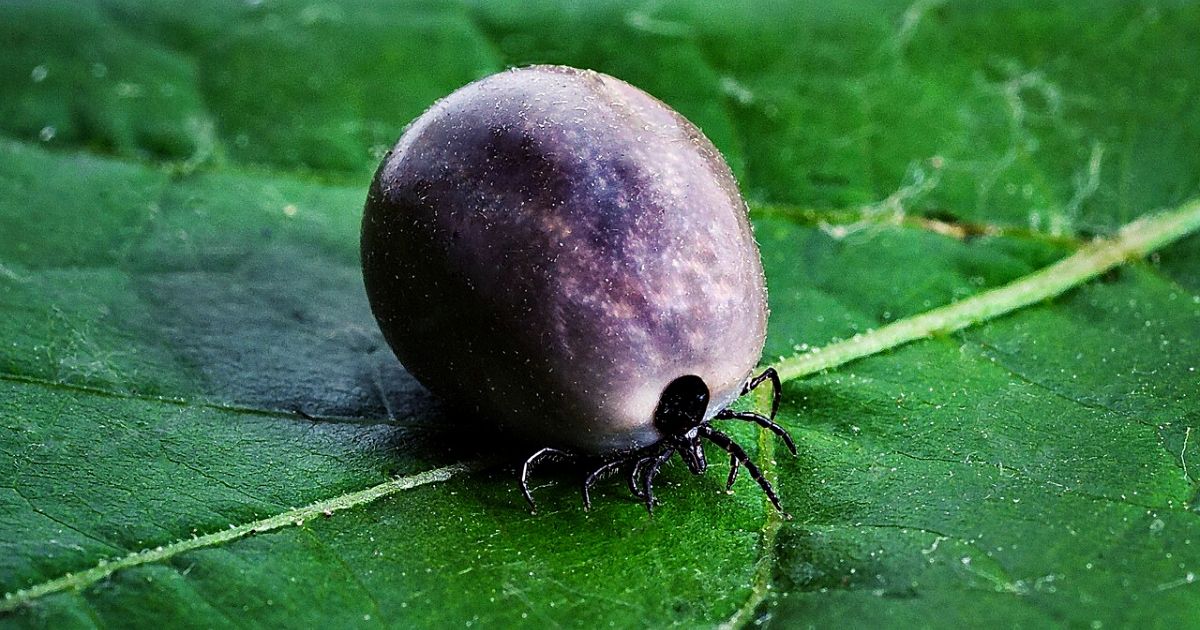How to Prevent and Treat Human Flea Bites in Singapore
fleas

Flea bites are not uncommon in Singapore and can be an irritating and uncomfortable experience for people. It is important to understand what causes flea bites, and how to identify and prevent them to maintain a pest-free environment.
Table of Contents
- What Are Flea Bites?
- Where Do Fleas Come From?
- What Do Flea Bites Look Like?
- Flea Bite Symptoms
- Bed Bug Bites vs. Flea Bites
- Flea Bites vs. Tick Bites
- How to Treat Flea Bites
- How to Relieve Itching from Flea Bites on Humans
- How to Prevent Flea Bites
- Treating Flea Bites in Singapore
What Are Flea Bites?
Flea bites are small itchy red bumps that occur when fleas, small parasitic insects, feed on the blood of their hosts. Fleas feed on the blood of various mammals, including humans and pets. Understanding the nature of flea bites is crucial for effective flea bites prevention and treatment.
Where Do Fleas Come From?
Singapore’s tropical climate provides a good environment for fleas to thrive. Fleas are typically found on pets like cats and dogs, but they can also lay eggs and develop in human environments, like carpets, bedding, and upholstery. Controlling flea infestations involves targeting both adult fleas and their eggs, i.e the flea host and the areas they inhabit.
Pro Tip: The best way to prevent flea bites on humans is to treat pets for fleas and clean the living spaces regularly.
What Do Flea Bites Look Like?
Flea bites usually look as small, red, itchy bumps with a central raised point. They often form in clusters of three or four or straight lines. Flea bites are usually found on the lower legs and ankles, although they can occur on any part of the body. Unlike mosquito bites, flea bites remain small in size.
Flea Bite Symptoms
The main symptoms of flea bites include redness, swelling, and intense itching. The skin around bites becomes painful. In some cases, individuals may experience an allergic reaction, leading to more severe symptoms. Scratching flea bites can also cause skin damage and infections, so it’s important to avoid scratching excessively.
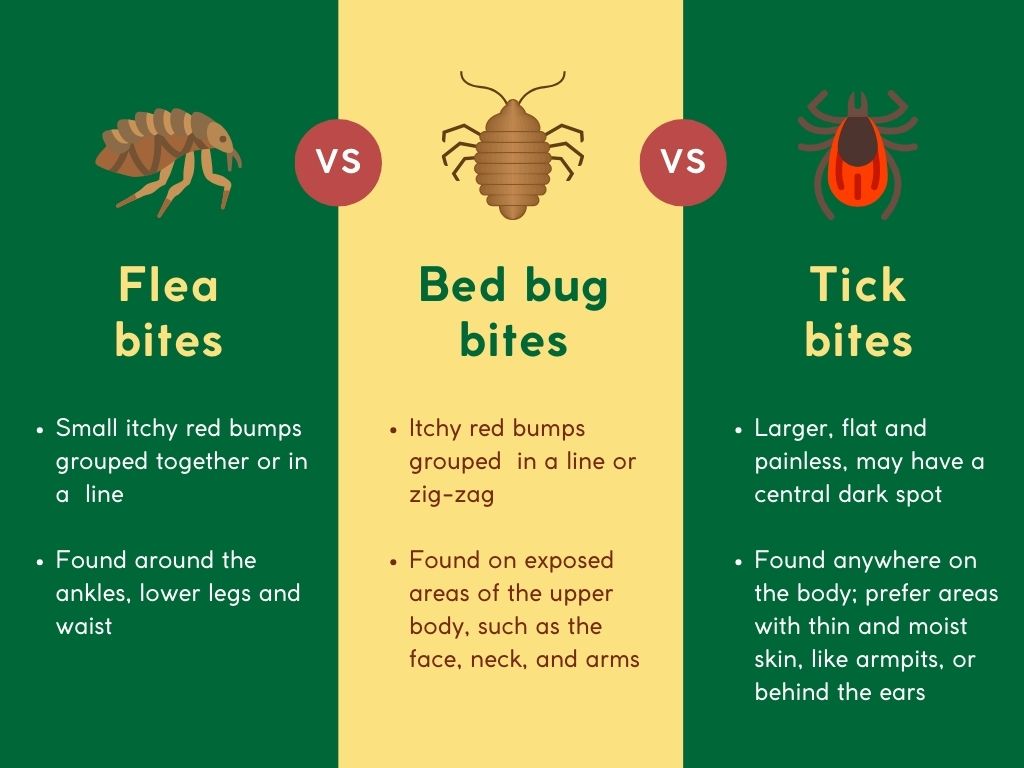
Bed Bug Bites vs. Flea Bites
Similar to flea bites, bed bug bites often appear in a linear or cluster pattern. While both bed bug and flea bites can cause itchy red bumps, there are key differences.
- Bed bugs bites usually occur as multiple big bites grouped together in a line or zig-zag, while flea bites occur as many small bites grouped together or in a straight line.
- Bed bugs are more likely to be found on exposed areas of the upper body, such as the face, neck, and arms. Flea bites, on the other hand, tend to be around the ankles and lower legs.
- Unlike fleas, bed bugs usually come out only at night.
Flea Bites vs. Tick Bites
Flea bites and tick bites are both caused by parasitic insects, but they also have some differences:
- Flea bites are small, itchy, and often grouped together, while tick bites are usually larger, flat and painless, and may have a central dark spot where the tick attached to the skin.
- Tick bites can be found anywhere on the body, but they prefer areas where the skin is thin and moist, like armpits, or behind the ears. Flea bites are usually found around the ankles, lower legs and waist.
Both flea bites and tick bites can transmit various diseases, so it is important to see the doctor if you think you may have been bitten by them.
Want to find out more about fleas removal in Singapore?
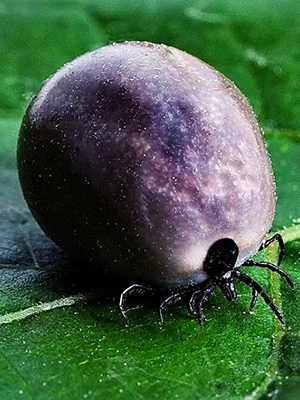
How to Treat Flea Bites
Even though flea bites usually will go away without treatment, there are some things you can do to relieve the symptoms:
Clean the Bitten Area. Wash the bites with mild soap and water to reduce the risk of infection.
Apply Cold Compress. Use a cold compress to relieve the swelling and itching.
Use Antihistamines. Antihistamines can help reduce itching and inflammation.
Apply Anti-Itch Ointments. Calamine lotion or hydrocortisone cream can provide relief from itching.
Avoid Scratching. Resist the urge to scratch to prevent further irritation and potential infection.
If the itching doesn’t go away, or you experience swelling, it might be necessary to see a doctor for further treatment.
How to Relieve Itching from Flea Bites on Humans
If you are looking for DIY ways to relieve the itching from flea bites, there are some natural solutions to try:
- Oatmeal Baths: Soak in an oatmeal bath to soothe irritated skin.
- Aloe Vera Gel: Apply aloe vera gel to reduce itching and heal the bites.
- Tea Tree Oil: Tea tree oil can have anti-inflammatory and soothing effects.
- Baking Soda Paste: Mix baking soda with water to create a paste and apply it to the affected area for relief.
How to Prevent Flea Bites
It is also important to get rid of the fleas themselves to prevent further bites from occurring. Some effective ways to prevent fleas include:
Pet Care: People most commonly get flea bites after contact with their pets, so it is important to regularly check and treat pets for fleas using vet-recommended products.
Clean Living Spaces: Frequently vacuum carpets, wash bedding and ped betting in hot water, and clean upholstery to eliminate fleas and their eggs. Also, regularly clean vacuum filters and dispose of vacuum bags immediately.
Avoid Potentially Infested Areas: Be cautious in outdoor areas where fleas may be present, especially with pets.
Use Flea Repellents: Apply insect repellent to exposed skin when outdoors.
Protective Clothing: Wear long sleeves and pants to reduce exposed skin and minimize the risk of flea bites.
Treating Flea Bites in Singapore
Preventing and treating flea bites in Singapore involves a combination of pest control methods, pet care and personal protection measures. If the infestation becomes a bigger problem, it is recommended to contact pest control experts in Singapore to handle the infestation safely and effectively.

Pest Problem? Let Us Help.
We offer fast and effective precision treatments to eliminate pests while ensuring a safe environment for your home or business.
Author: Soleha Nisaa
Frequently Asked Questions
Fleas can be found in Singapore, especially in living spaces with pets. Effective preventive measures can help minimize the risk of flea bites.
While most flea bites cause mild itching and redness, some individuals may have severe allergic reactions. If you experience swelling or any other severe symptoms, you need to contact a medical professional.
Flea bites are generally not dangerous, but scratching the bites can lead to secondary infections and complications.
Contact pest control professionals for a thorough inspection and treatment of your home to eliminate fleas and prevent future infestations.
How to Get Rid of Fleas: Natural Ways to Kill Fleas
fleas

Fleas are tiny pests that can be present in every household, but they are especially common in homes with pets. Their bites can cause itching and discomfort for both humans and animals, so it’s important to implement measures when you indicate the first signs of the infestation. While there are many chemical-based products available, opting for natural remedies is not only safer for your family and pets but is also better for the environment.
Are There Any Natural Ways to Kill Fleas?
There are several natural ways to kill fleas. Some effective methods include sprinkling herbal repellents or applying essential oils to the infested areas. You can also try using diatomaceous earth or salt to dehydrate fleas. Additionally, regular vacuuming and washing of bedding and fabrics can help eliminate fleas. Common products used to kill the fleas naturally include:
- Cedarwood
- Vinegar
- Baking soda
- Lemon spray
- Rosemary
Why Natural Remedies Are Beneficial for Fleas?
Opting for natural remedies to kill fleas offers numerous benefits when compared to chemical-based solutions, including:
- Safety for people and pets: Chemical solutions often contain toxins that can be harmful for people and pets if not used properly. Natural remedies, on the other hand, offer a safer way to deal with fleas’ infestation, minimizing the risk of adverse reactions or allergies.
- Eco-friendliness: Chemical solutions typically contain ingredients that can have negative impact on the environment and cause pollution. While natural remedies are a more environmentally-friendly and sustainable solution.
- Cost-effectiveness: Natural flea control methods are often more cost-effective than chemical treatments. Many natural remedies can be made using common household items (e.g. baking soda, vinegar, herbs) which are inexpensive.
- Long-lasting effects: Natural flea control methods may take longer to work than chemical treatments, but they often have long-lasting effects. By focusing on root causes of infestations and taking preventive measures, natural solutions can reduce the likelihood of future infestations.
However, despite all the listed benefits, it’s important to note that severe flea infestations may require the help of a professional pest control company.
Want to find out more about fleas removal in Singapore?

DIY Remedies to Get Rid of the Fleas in Your House
There are many DIY flea remedies that can help you prevent and get rid of the flea infestation in your house. Some options to consider include:
- Vacuum and steam clean regularly. Fleas are known to nest in carpets, rugs, and curtains, so it’s important to keep these areas as clean as possible. Thoroughly vacuum carpets, rugs, floors, furniture and other areas, paying special attention to corners and crevices where fleas can hide. After vacuuming, consider steam cleaning your carpets and washing bedding, curtains and other fabrics in hot water to kill fleas and their eggs.
- Maintain your house surroundings clean. Make sure that fleas don’t enter your home from the yard – trim your grass regularly and remove any debris or clutter that could attract fleas.
- Use diatomaceous earth on infested items to dehydrate the fleas and their eggs. Sprinkle diatomaceous earth on your carpets, furniture, and pet’s bed, and let it sit for a few hours before vacuuming it up.
- Use essential oils – these oils have a strong scent that can repel fleas. Just add a few drops of essential oil to a spray bottle filled with water and spray it around your home.
- Make natural flea sprays using ingredients like vinegar, lemon juice, and salt to repel the fleas.
- Using flea traps to attract and trap fleas.
Although DIY flea remedies can help you manage the infestation at some level, they may take longer to work and may not completely resolve the problem. In case of a severe flea infestation, it is better to consult with pest control professionals and take necessary measures before the infestation gets out of hand.

What Natural Oils Kill Fleas?
Essential oils are often used as a natural repellent to get rid of pest infestations. No wonder that they have also been known to have flea-repelling properties. Some of the essential oils that are known to be effective when dealing with a flea infestation include:
- Lavender
- Peppermint
- Lemongrass
- Eucalyptus
- Tea tree oil
When using essential oils, you can either add them in a diffuser or mix with water to create a spray and apply it to the infested areas. However, it’s important to note that essential oils alone may not completely eradicate a flea infestation. It is best to use essential oils in conjunction with other flea control methods.
Pro Tip: In case of a severe flea infestation, it is necessary to consult with pest control professionals along with using natural remedies for fleas.
Conclusion
Each infestation needs to be evaluated properly in order to determine the best course of action for your particular situation. While natural remedies for flea infestations work well in mild cases, if the situation seems out of control consulting with a professional might be the best solution.
Whatever method you choose it is essential to follow through and make sure that all potential hiding spots are treated with whatever approach you have selected. If getting rid of these pests has become an extra burden on top of your everyday activities don’t hesitate to contact Killem Pest as our experience and knowledge could make a world of difference when it comes to eliminating any flea infestation.

Pest Problem? Let Us Help.
We offer fast and effective precision treatments to eliminate pests while ensuring a safe environment for your home or business.
Author: Soleha Nisaa
Frequently Asked Questions
Yes, sunlight can aid in getting rid of fleas naturally. Fleas thrive in dark and humid environments, so exposing infested areas to direct sunlight can help kill them. However, it’s important to combine this method with other flea control measures for maximum effectiveness.
While professional treatments can provide immediate relief from a flea infestation, natural methods help in preventing future infestations and reducing reliance on chemical-based solutions.
If you have tried natural flea control methods for an extended period without success, or if you have a large infestation that poses a risk to the health and comfort of your family and pets, professional expertise is crucial for effective and efficient flea eradication.
Yes, pest management experts offer a comprehensive approach to flea control. They have access to a wide range of professional-grade products and treatments that can effectively eliminate fleas at all stages of their life cycle. In addition to treating infested areas, they can also provide advice on preventative measures to minimize the risk of future infestations.
The Ultimate Guide to Preventing Lyme Disease
fleas

Lyme disease is an illness caused by a particular species of bacteria named Borrelia mayonii. The illness can be very debilitating and sometimes people don’t realize they have been infected, particularly since many of the symptoms are quite vague.
It is helpful to know details on how the disease is transmitted because this helps in learning what you can do to prevent infection. There are several steps you can take to help prevent yourself from getting Lyme disease. Read further to learn about what you can do to avoid this disease.
How Lyme Disease is Transmitted
The bacteria that cause Lyme disease are carried by ticks, which then transmit the bacteria when they bite a host.
Humans can become infected when bitten by a tick that is carrying the bacteria.
The ticks are known to harbour the bacteria are called deer ticks. The bacteria is not actually found in the deer but ticks carrying the bacteria may attach to deer, bringing them closer to people.
As it turns out, the Borrelia bacteria that causes the illness is found in mice. It is when larval ticks feed on mice that they become infected and end up as vectors of the bacteria.
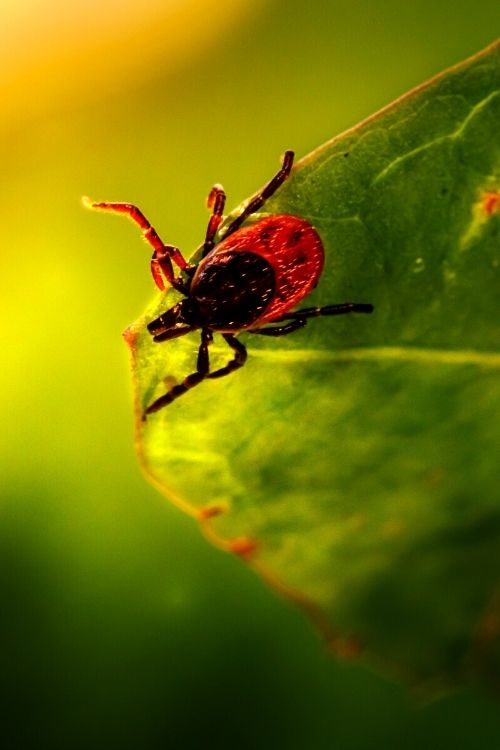

Lyme disease is most commonly associated with the United States because it was first discovered there in the town of Lyme, Connecticut.
However, it is now known that Lyme disease is found all over the world including in Singapore where other tick species can carry this bacteria, and other disease-causing organisms.
Want to find out more about tick removal in Singapore?

Ticks in Singapore
There are at least 14 species of ticks that have been recorded in Singapore.
At least one of these species is known to carry the bacteria that causes Lyme disease. But more research is needed on the various tick species in Singapore.
The tick species Ixodes granulatus can potentially transmit Lyme disease in Singapore. It is, therefore important to be aware of the disease and some of the symptoms that are associated with Lyme disease.
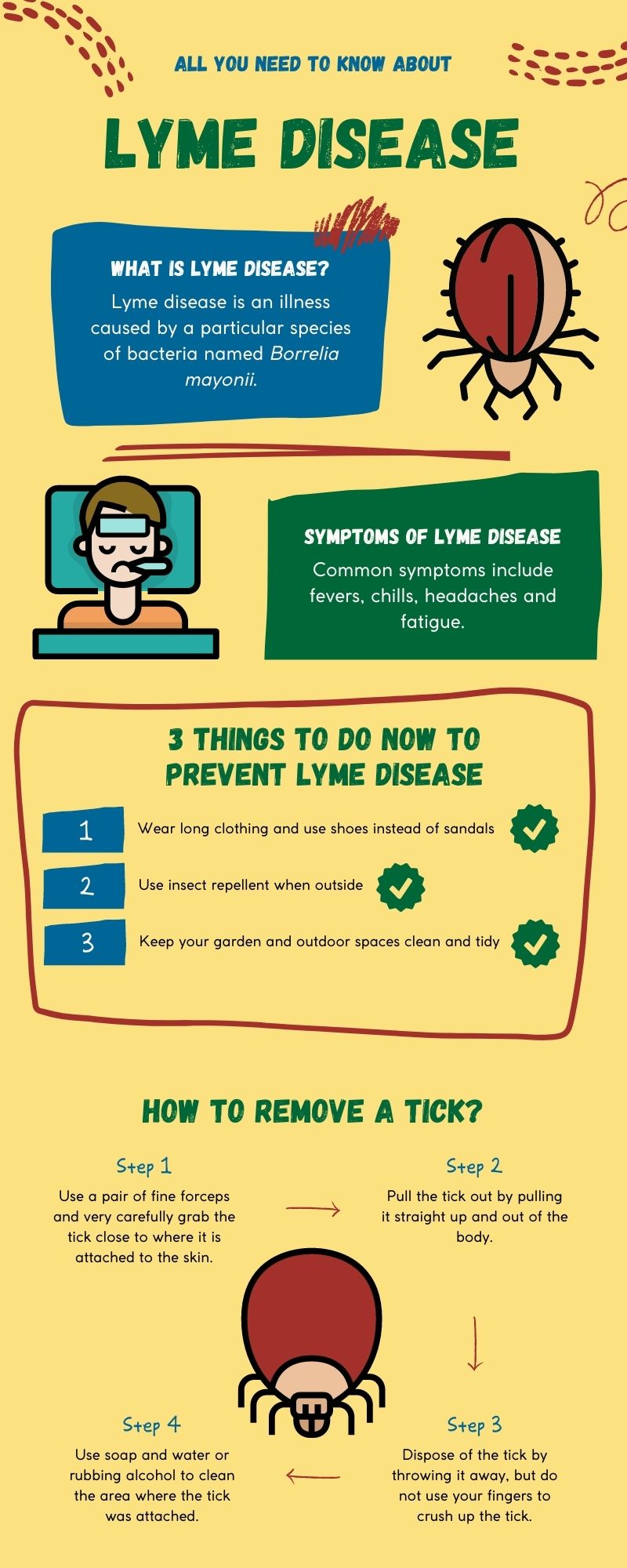
Lyme Disease Symptoms
Awareness of Lyme disease symptoms is useful in diagnosing and detecting the illness in a population. There are many signs of Lyme disease including the following listed below:
- Fever and chills
- Headache and fatigue
- A red bulls-eye type rash develops with Lyme disease. This rash can grow up to 30 cm in size.
- Joint pain similar to what someone with arthritis experiences
- Pain in the bones and muscles
- Facial drooping knew as palsy
- Feeling dizzy
- Shortness of breath
- Heart palpitations
It is important to understand that many of these symptoms are vague and could indicate a different health problem, but if you have the bulls-eye rash along with these other symptoms then you could very well have Lyme disease.
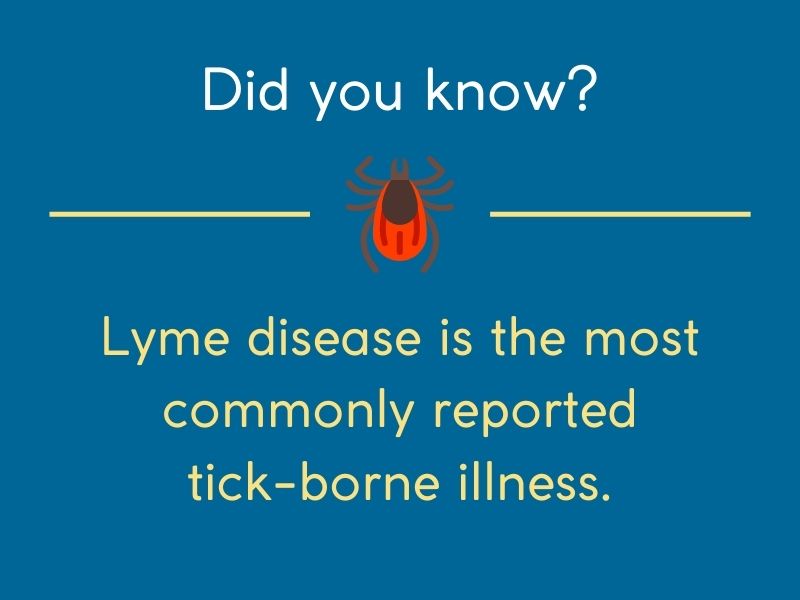
The Rash of Lyme Disease
A circle-shaped rash may occur where the tick bites you. This can be a Lyme disease bite if the tick is infected. In many people, the rash from Lyme disease increases in size and takes on the appearance of a bulls-eye.
The rash does not hurt and is often not even itchy so you may not realize right away that you have the disease.
People can sometimes have many rashes develop on the body as the bacteria spread and the infection progresses.
Not every person with Lyme disease develops a noticeable bulls-eye rash or multiple rashes. If you have been bitten by a tick, though, you should look for a rash and see your doctor if other symptoms develop.
Pro tip: Wear long clothes.
Lyme Disease Prevention
To keep yourself safe you need to avoid getting bitten by ticks in the first place. Preventing contact with ticks and other vectors of disease is important. This is important because ticks don’t only carry Lyme disease but other bacteria as well.
Many of the steps for preventing Lyme disease rely on behaviour that helps reduce your contact with ticks that could be carrying the bacteria.
We have some tips for preventing Lyme disease that we have listed below:
- Wear long pants and long shirts if walking in thick grass and bush.
- Wear long socks and tuck your long pants into your socks.
- Do not walk barefoot through tall grass and wooded regions.
- Wear closed shoes instead of sandals or open footwear.
- Wear insect repellant with at least 0.5% permethrin in, particularly if you are planning on walking through tall grass and spending a lot of time outside.
- Apply insect repellant to your clothing before going for a walk into the grass and woods.
- Check your clothing and body often for signs of ticks you may have picked up, especially if you have been out in the words or walking among long grass.
- Keep your garden clear of areas of thick bush, long grass, and clumps of debris where ticks and mice may be found.
- Immediately remove any ticks that you find on your clothing or body.
- Check your pets on a regular basis for signs of ticks and remove these ticks.

Pest Problem? Let Us Help.
We offer fast and effective precision treatments to eliminate pests while ensuring a safe environment for your home or business
How to Safely Remove Ticks
There is a specific way to remove a tick from the body to prevent it from injecting more saliva and bacteria into the body. You can use this same method for removing ticks from pet animals like dogs.
Steps to remove a tick from the body:
- Use a pair of fine forceps and very carefully grab the tick close to where it is attached to the skin.
- Pull the tick out by pulling it straight up and out of the body.
- Dispose of the tick by throwing it away, but do not use your fingers to crush up the tick.
- Use soap and water or rubbing alcohol to clean the area where the tick was attached. This may help to remove any of the saliva or bacteria from the wound.
Remember to take steps to avoid contact with ticks as much as possible to help prevent you from catching Lyme disease.
Frequently Asked Questions
You can get infected when you get bitten by ticks that carry the Lyme disease bacteria.
If you have Lyme disease, you may feel any of the following symptoms at first: Rashes, fevers, headaches and fatigue. When left untreated, more serious symptoms can occur.
If Lyme disease is detected at an early stage, treatment can cure the disease.
The Complete Guide to the Prevention, Treatment and Control of Fleas and Ticks in Singapore
Fleas and ticks are tiny pests that are capable of causing great problems to humans. They leave itchy bites with distinct bite marks on human skin.
Fleas and ticks are two different pests that are often mistaken with one another. Fleas have long and powerful hind legs that allow them to perform high jumps. Ticks, on the other hand, do not jump. They have four pairs of legs which make them part of the spider family (arachnids).
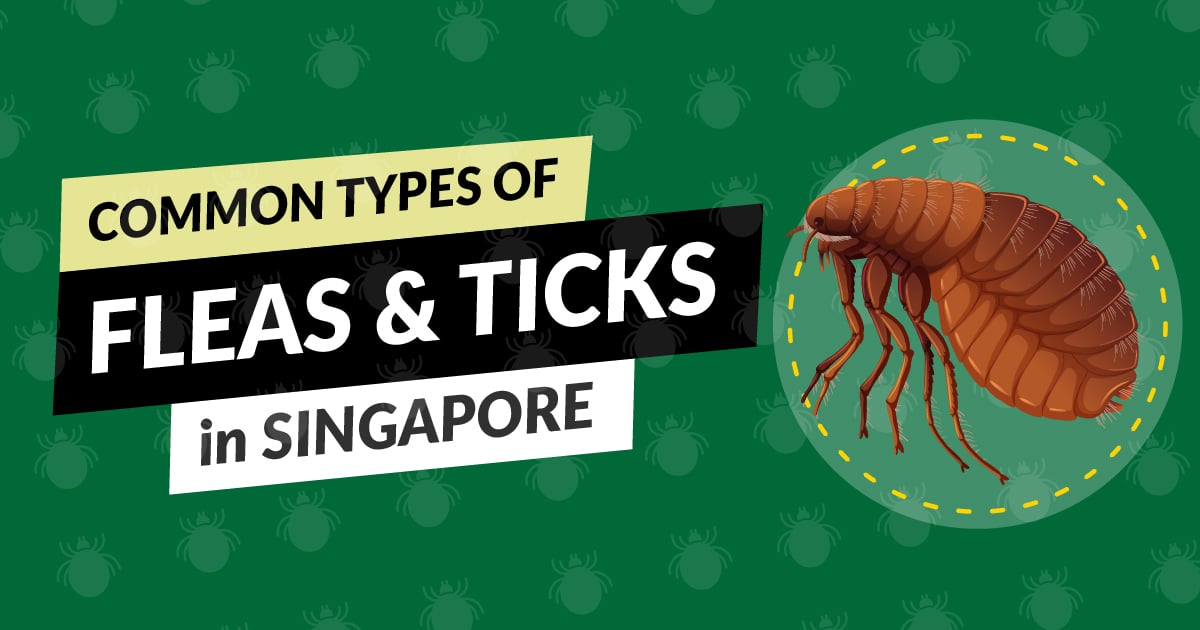
Types of Fleas and Ticks in Singapore
What are some of the common species of fleas and ticks found in Singapore?
Cat Flea (Ctenocephalides felis) and Dog Flea (Ctenocephalides canis)
Cat and dog fleas are the most common type of fleas found in Singapore. They can be found on pets, stray dogs and cats. However, despite their names, neither type of flea is exclusive to only cats or dogs. These fleas are usually 1-4mm in size. It isn’t easy to differentiate between the two species with the naked eye. Cat and dog fleas are excellent jumpers with the ability to reach 18cm vertically and 33cm horizontally, which is about 100 times their body length!
Dog Tick (Rhipicephalus sanguineus)
The brown dog tick is the species of ticks commonly found in Singapore. A dog can pick up ticks from the surroundings as ticks infest more than one host during their lifetime. The ticks can be found on the skin of the pets’ head, neck, ear and feet. In heavy infestations, the ticks can be found in nearby parts such as kennels or cages.
Oriental Rat Flea (Xenopsylla cheopsis)
Although the Oriental rat flea is not commonly found in Singapore, it is worth mentioning it. The Oriental rat flea is the vector for the bacterium that caused more than one of the deadliest pandemics in history. This flea type was responsible for spreading the bubonic plague, leading to the Black Death in the 14th century and killing over 25 million people.
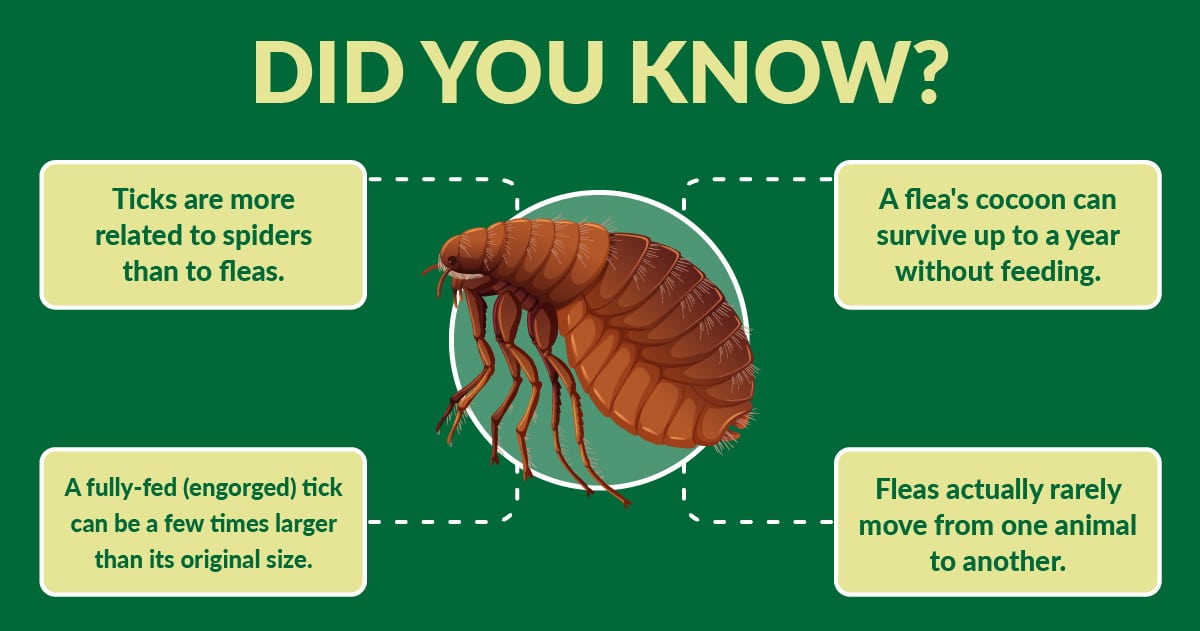
Life Cycle and Biology
Fleas undergo a complete metamorphosis. They go through the following stages of life:
- Egg
- Larvae
- Pupae
- Adulthood
Fleas have an average lifespan of 2 to 3 months. The fleas found on animals are always adults. Eggs are laid on the animal host’s body but will fall to places where the host rest, such as cages and cat baskets. The adults ingest blood from the host and produce faecal matters that become the food for the larvae.
Before turning into adults, the larvae form cocoons. The adults then emerge when stimulated by vibration, movement, or increased carbon dioxide (which indicates animal hosts’ presence).
The dog tick is a 3-host tick that encounters three hosts throughout its entire life span. The larva takes a blood meal and turns into a nymph. Then, the nymph feeds once before developing into an adult. An adult takes a blood meal before it lays eggs.
A female tick can lay an average of 4000 eggs. The number fluctuates with the amount of blood ingested. The host-seeking behaviour of a tick causes it to be seen in the open as it actively searches for a new host to latch on to. Ticks have a long life span and they can survive without feeding for 3 to 5 months.
Medical Importance
There are three common diseases associated with flea and tick bites:
- Murine Typhus
- Plague
- Lyme Disease
Murine Typhus
Murine typhus is a zoonotic disease caused by a bacterium known as Rickettsia typhii. There have been several reports of murine typhus in Singapore. Humans become infected when the site of a flea bite is exposed to the flea’s faeces, or by inhaling the bacterium from an environment contaminated with fleas’ faeces. Murine typhus is primarily transmitted by the rat flea, but cat fleas may also be one of the vectors.
Symptoms of murine typhus include:
- Fever
- Headache
- Stomach pain
- Nausea
- Vomiting
The disease can deteriorate to cause severe illness and damage to other organs, including the lungs, liver, kidney, heart and brain.
Plague
A plague is an infectious disease caused by a bacterium known as Yersinia pestis. Transmission of this disease is similar to that of murine typhus: through the bite of the infected fleas or by inhalation.
The plague is transmitted by oriental rat fleas and is most prevalent in Africa. Although the plague has claimed the lives of millions of people throughout history, today it can be treated with antibiotics and prevented with standard preventive measures.
Want to find out more about fleas & tick removal in Singapore?
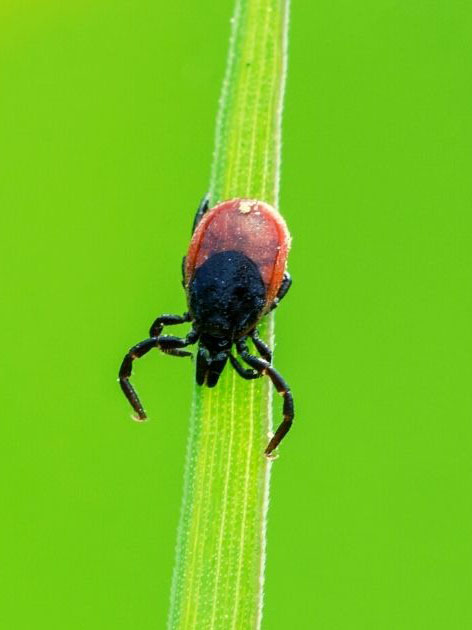
Lyme Disease
One of the major tick-borne diseases is Lyme disease. It is caused by the deer tick, which is not found in Singapore. Lyme disease’s most common sign is an expanding rash at the bite that may form a bulls-eye pattern.
If left untreated, the infection can spread and cause pain to the joints as well as cause neurological problems such as:
- Meningitis
- Temporary paralysis of one side of the face (Bell’s palsy)
- Numbness or weakness in limbs
- Impaired muscle movement
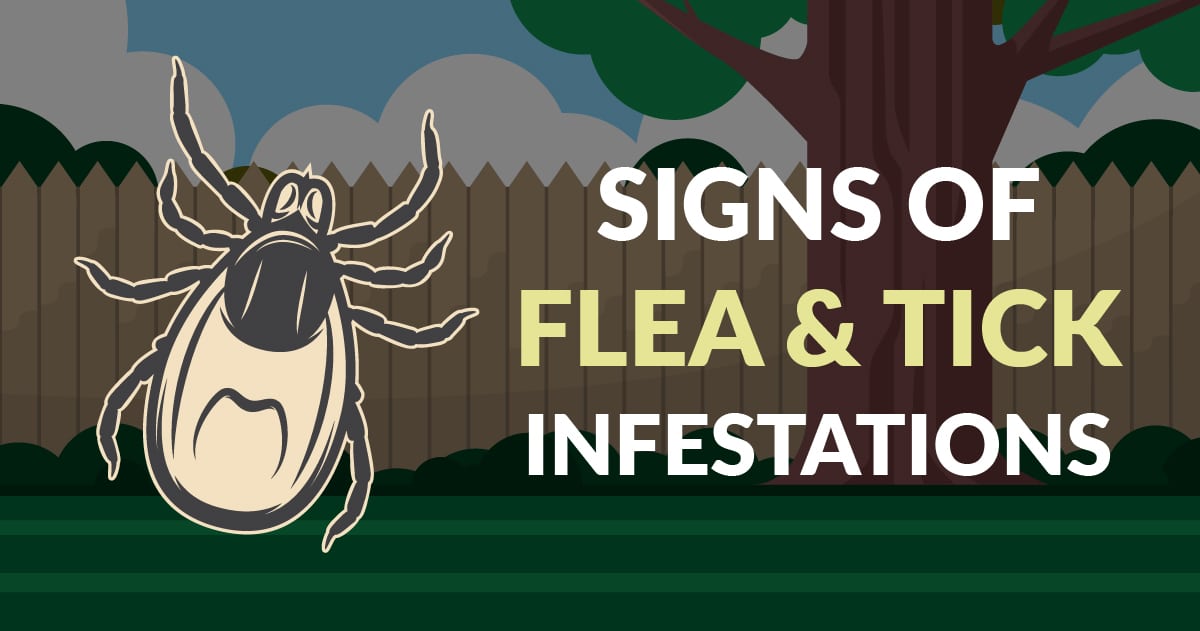
Signs of Flea and Tick Infestations
It might not be easy to detect fleas and ticks at home because of their small size and cryptic behaviour. Here are some signs that may indicate a flea or tick infestation.
1. Itching or infected skin
Even though they can feed on human blood, animals are the primary hosts of fleas and ticks. Your pets may have itching skin. Hence, they might scratch their skin or bite their skin more frequently than usual. Besides, symptoms such as hair loss and rashes may develop on your pets as the fleas or ticks bite and cause infections on their skin.
2. Finding them on or around your pets
Although fleas and ticks are difficult to spot, it is not impossible. They can be detected on your pets’ body when you comb their hair. Ticks and fleas can also be found around the cage or bedding where the pets rest. It is possible to see them moving around as they venture out away from their nests seeking a new host.
3. Bites
Fleas leave itchy bites on humans. Those bites are one of the most obvious signs of flea infestation. Flea bites are itchier compared to mosquito bites. The reactions that the skin develops from them are usually more severe and include:
- Rashes
- Hives
- Blisters
On the other hand, tick bites are usually not painful or itchy. However, they do leave red spots or bumps on the affected skin.
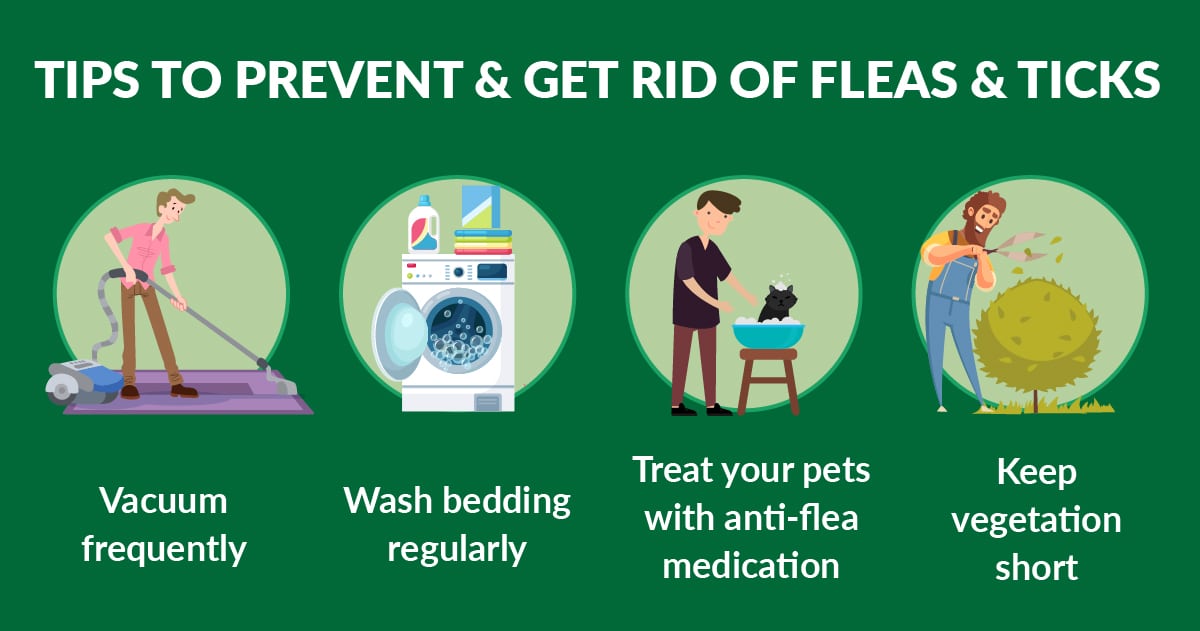
Tips to Prevent Fleas and Ticks From Invading Your Home
1. Vacuuming frequently
Vacuuming is not only a way to clean your house and remove unwanted dirt and dust. It also helps you prevent infestations of fleas and ticks. Vacuuming can physically remove the pests, their eggs and larvae. If you suspect that you have fleas or ticks at home, you should seal the vacuum bag and dispose of it properly after vacuuming. This ensures that the pests cannot make their way back into your home.
2. Wash bedding regularly
As mentioned earlier, fleas and ticks do not spend their entire lifespan on their hosts. They can sometimes be found nearby. Fleas and ticks can infest (pet) bedding. Bedding should be washed in hot, soapy water every two to three weeks to eliminate the pests.
3. Treat your pets with anti-flea medication
Flea medications can not only be used to treat an existing infestation of fleas. It can also be used for prevention. There are medications taken orally by the pets and those that are applied topically onto the pets’ skin. Flea medications can be administered once a month to protect you and your pets from fleas.
4. Keep vegetation short
Ticks often climb onto grasses to increase their success rate of finding a new host. By keeping the vegetation short, you can prevent this from happening and reduce the hiding options.
DIY Methods to Prevent Fleas and Ticks in Singapore
Essential oils are known to have many benefits, including insect-repelling effects. Cedarwood essential oil can be diluted and applied to the pets’ skin to kill and prevent fleas. It can also be added to a diffuser to protect your house against fleas. Some essential oils, such as rosemary, can be added to the pets’ bath to provide long-acting flea repelling effects.
Since it is impossible to know whether a parasite is potentially carrying any diseases, it is important to protect pets against all ticks and fleas.

Pest Problem? Let Us Help.
We offer fast and effective precision treatments to eliminate pests while ensuring a safe environment for your home or business.
Professional Fleas and Ticks Treatment
Chemical Treatment
Chemical treatment is the fastest and most effective method to eliminate an existing infestation. The insecticides that we use are safe for pets. All our PMPs are trained to carry out the treatment by following proper procedures.
Habitat Modification
Based on the inspection carried out at the infested premises, our PMP will provide house owners with recommendations to prevent flea and tick infestations in the future. Building defects such as cracks and crevices may be discovered during the inspection. Hence, our PMP will provide advice on how to solve the deficiencies.
Advice
After identifying the problem, our PMP can provide you with more information (if needed) so that you can seek advice from medical professionals and veterinary experts.
Inspection and identification
Inspection is an essential step in any pest management approach. It helps Pest Management Professionals (PMP) identify the cause and level of infestations. By identifying the pest species causing the issue, PMPs in Singapore can plan suitable control measures to handle the situation.
Frequently Asked Questions
Both fleas and ticks can spread diseases and cause harm to humans, however, ticks are more dangerous as they can spread deadly diseases.
Yes, fleas and ticks can transmit diseases to humans, the most common of which are murine typhus, plague and Lyme disease.
Vacuuming, steam cleaning and washing beddings in hot water can help to prevent fleas and tick infestations. Flea medications can be used to treat and prevent flea infestations in pets.

